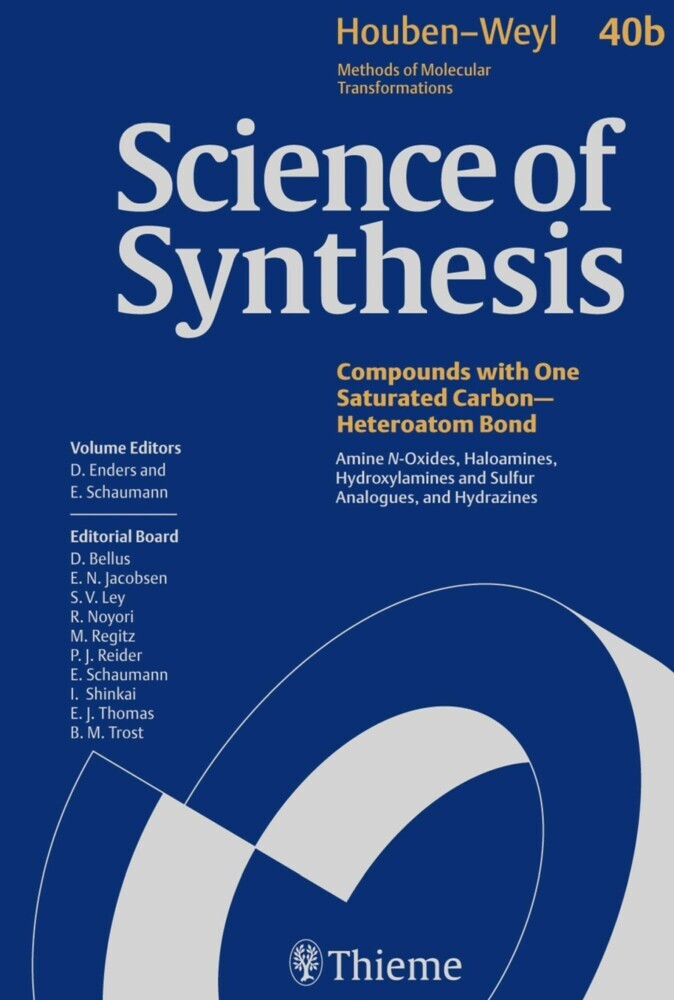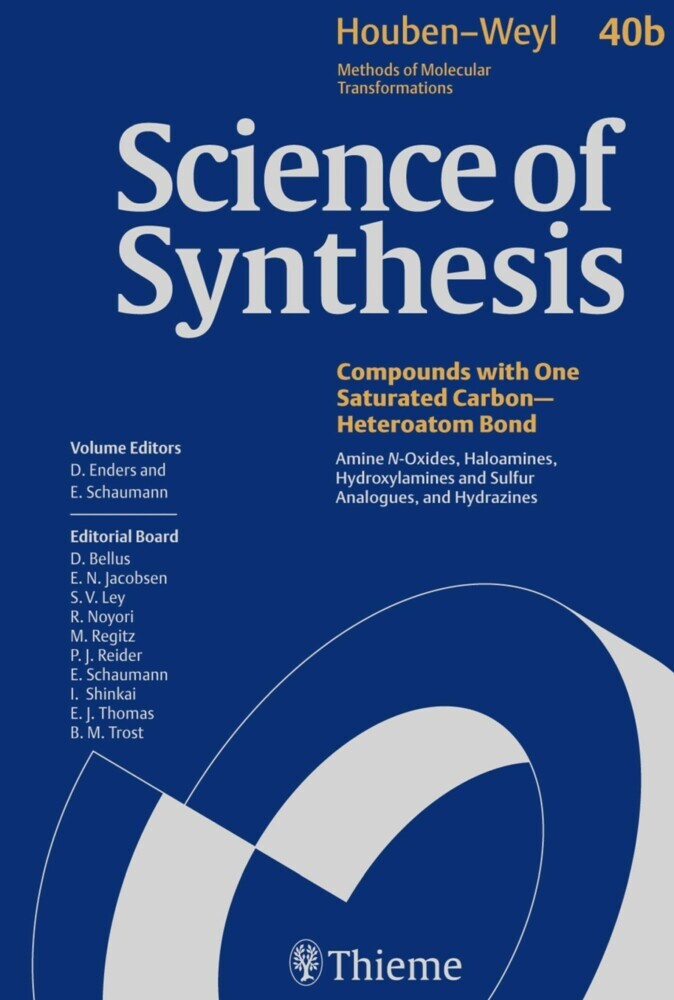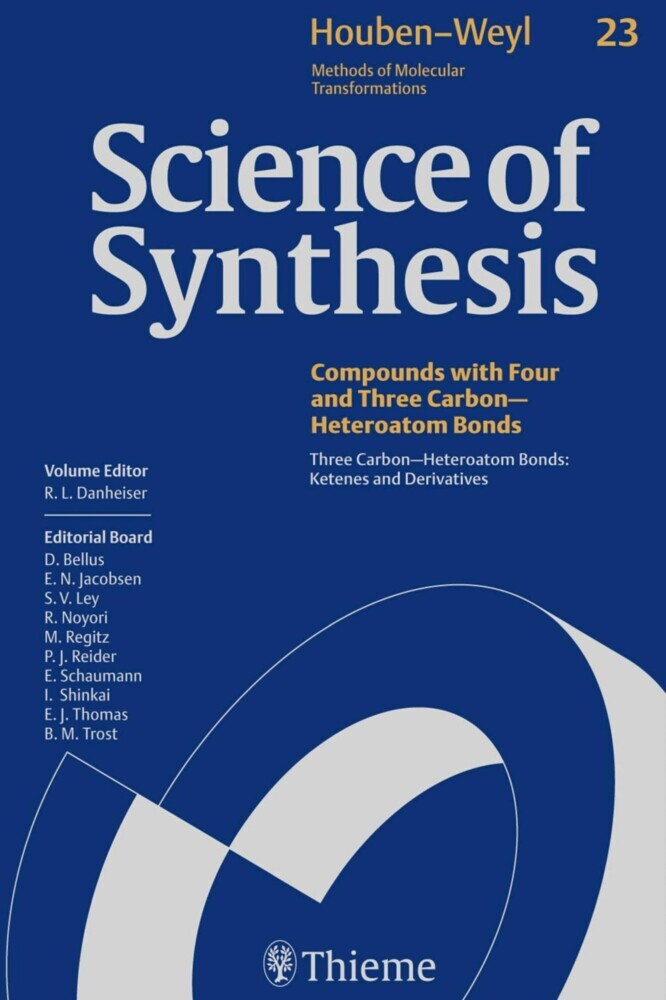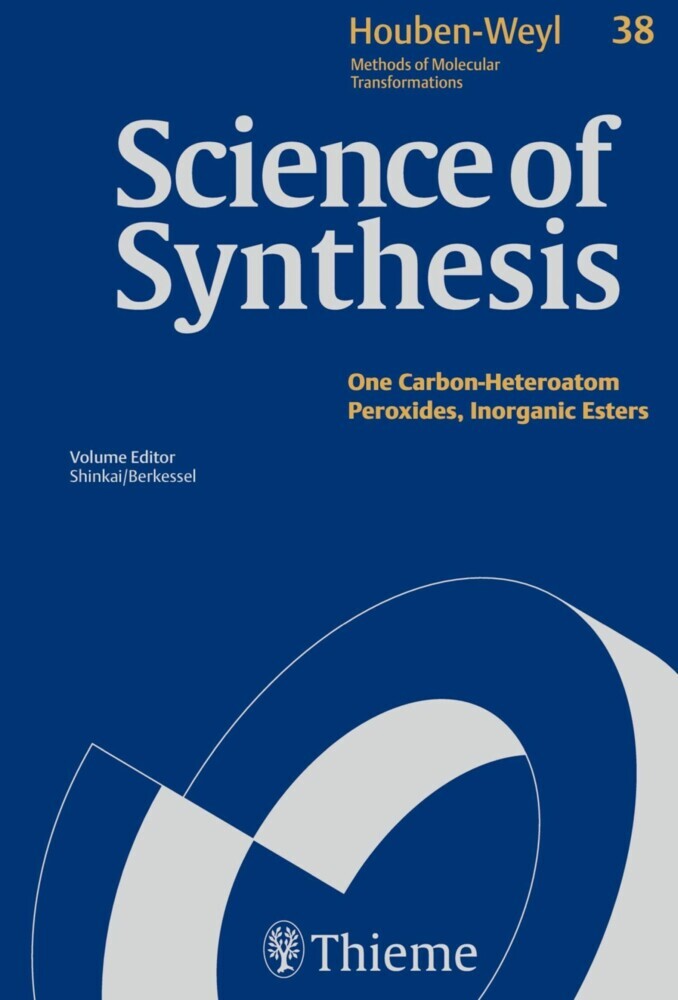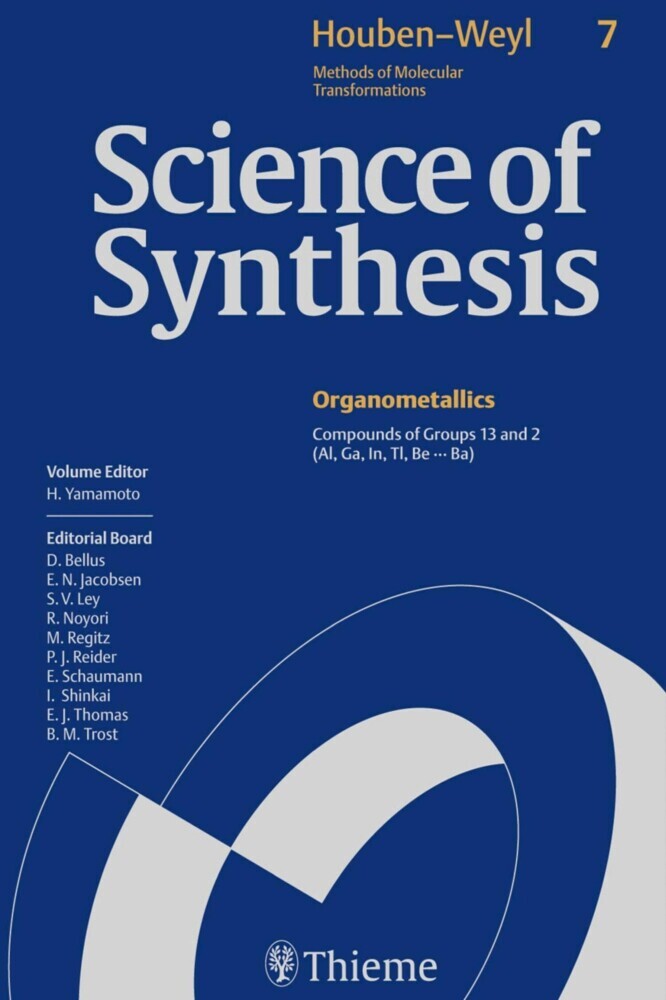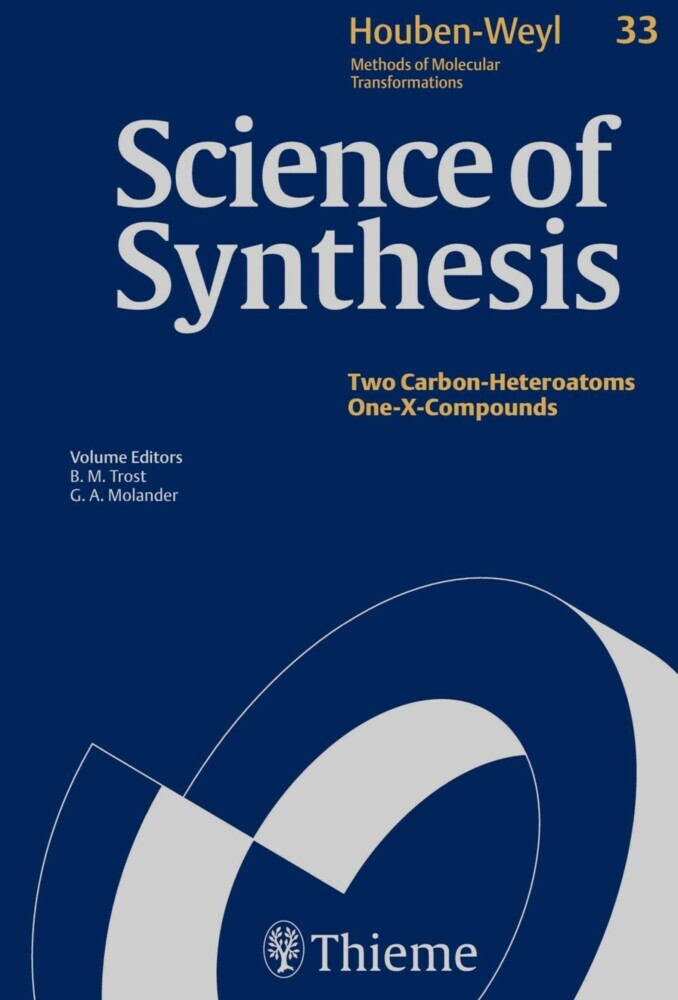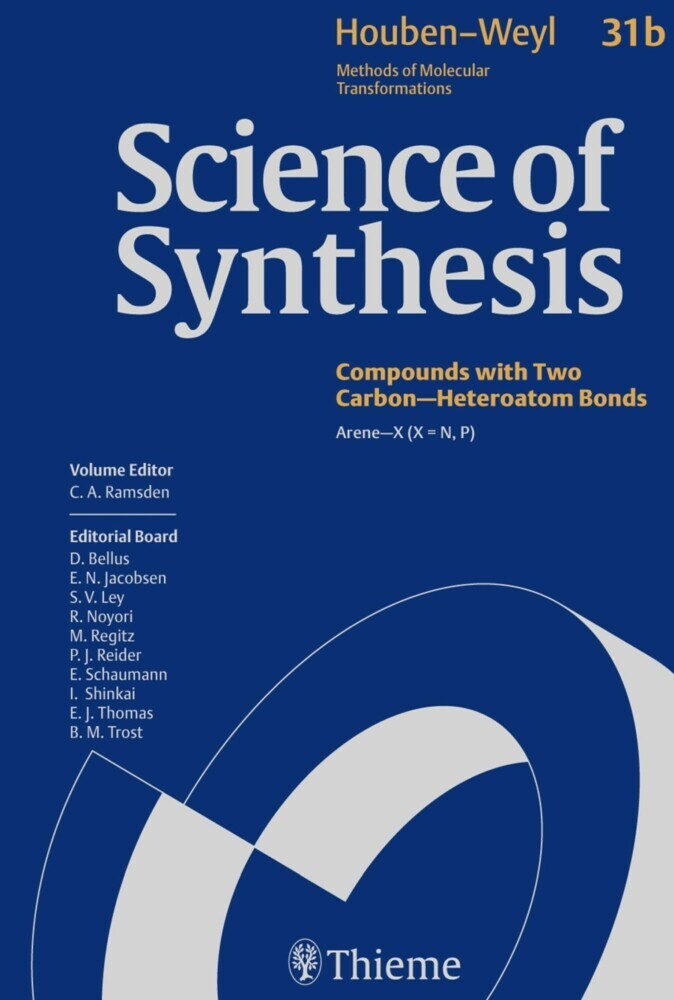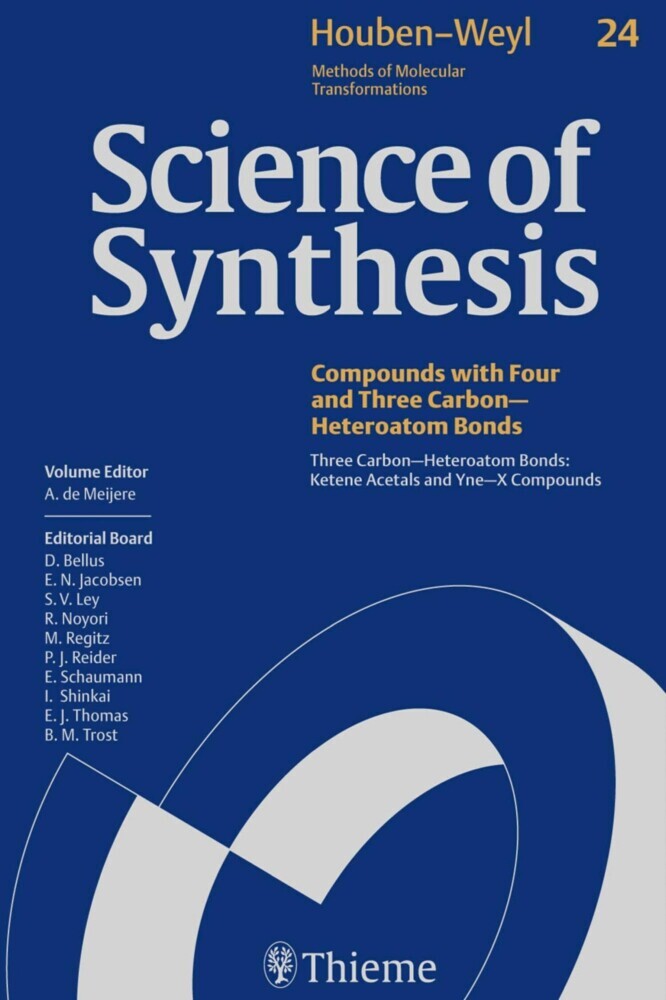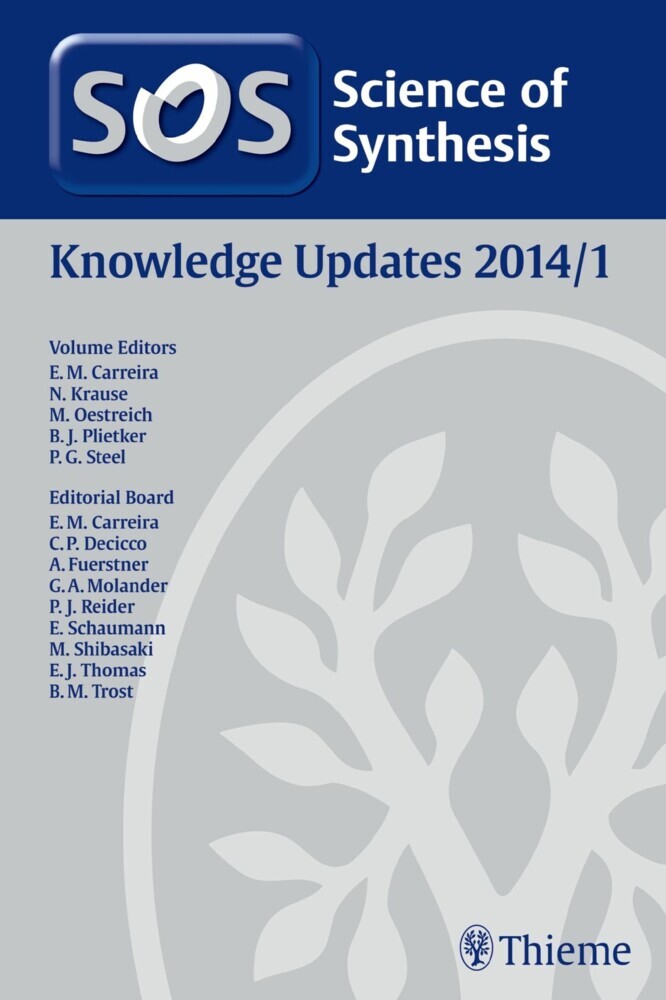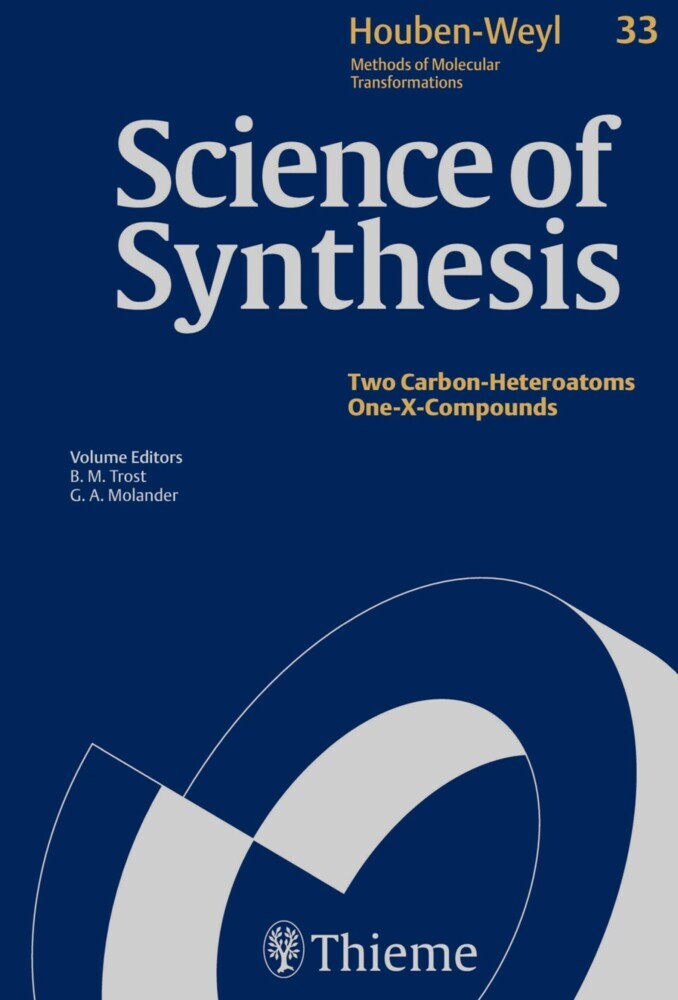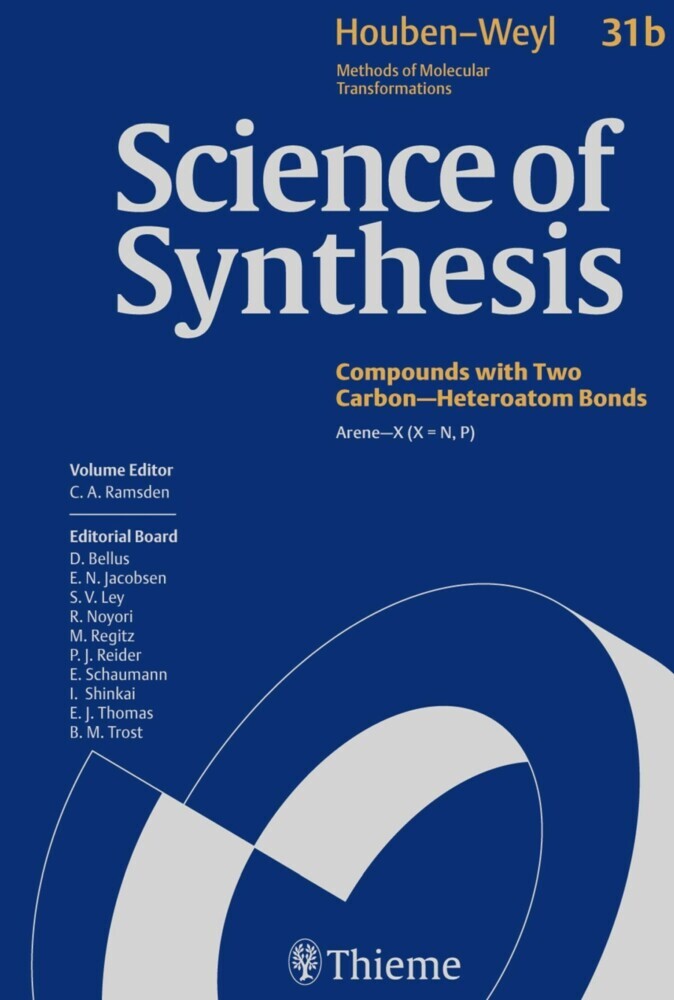Science of Synthesis: Houben-Weyl Methods of Molecular Transformations Vol. 40b
Amine N-Oxides, Haloamines, Hydroxylamines and Sulfur Analogues, and Hydrazines
Science of Synthesis: Houben-Weyl Methods of Molecular Transformations Vol. 40b
Amine N-Oxides, Haloamines, Hydroxylamines and Sulfur Analogues, and Hydrazines
Science of Synthesis: Houben-Weyl Methods of Molecular Transformations is the entirely new edition of the acclaimed reference series Houben-Weyl, the standard synthetic chemistry resource since 1909. This new edition is published in English and will comprise 48 volumes published between the years 2000 and 2008.
Science of Synthesis is a quality reference work developed by a highly esteemed editorial board to provide a comprehensive and critical selection of reliable organic and organometallic synthetic methods. This unique resource is designed to be the first point of reference when searching for a synthesis strategy.
- Contains the expertise of presently 400 leading chemists worldwide
- Critically evaluates the preparative applicability and significance of the synthetic methods
- Discusses relevant background information and provides detailed experimental procedures
For full information on the Science of Synthesis series, visit the Science of Synthesis Homepage.
1;Science of Synthesis - Volume 40b: Amine N-Oxides, Haloamines, Hydroxylaminesand Sulfur Analogues, and Hydrazines;1 1.1;Title page;3 1.2;Imprint;5 1.3;Preface;6 1.4;Volume Editor's Preface;8 1.5;Overview;10 1.6;Table of Contents;12 1.7;40.2 Product Class 2: Nitroxyl Radicals (Nitroxides);26 1.7.1;40.2.1 Synthesis of Product Class 2;27 1.7.1.1;40.2.1.1 Method 1: Oxidation of Amines;27 1.7.1.2;40.2.1.2 Method 2: Oxidation of Hydroxylamines;28 1.7.1.2.1;40.2.1.2.1 Variation 1: From Hydroxylamines;28 1.7.1.2.2;40.2.1.2.2 Variation 2: From Nitrones;29 1.7.1.3;40.2.1.3 Methods 3: Other Methods;29 1.7.2;40.2.2 Applications of Product Class 2 in Organic Synthesis;30 1.7.2.1;40.2.2.1 Method 1: Alcohol Oxidation;30 1.7.2.2;40.2.2.2 Method 2: Controlled Radical Polymerization;31 1.7.2.3;40.2.2.3 Method 3: Radical Carboaminoxylations;32 1.8;40.3 Product Class 3: Amine N-Oxides;36 1.8.1;40.3.1 Synthesis of Product Class 3;41 1.8.1.1;40.3.1.1 Method 1: Reaction of Hydroxylamines with Alkylating Agents;41 1.8.1.2;40.3.1.2 Method 2: Oxidation of Tertiary Amines;42 1.8.1.2.1;40.3.1.2.1 Variation 1: Using Hydrogen Peroxide;43 1.8.1.2.2;40.3.1.2.2 Variation 2: Using Alkyl Hydroperoxides;46 1.8.1.2.3;40.3.1.2.3 Variation 3: Using Peracids;49 1.8.1.2.4;40.3.1.2.4 Variation 4: Using Molecular Oxygen;53 1.8.1.2.5;40.3.1.2.5 Variation 5: Using Ozone;53 1.8.1.2.6;40.3.1.2.6 Variation 6: Using Oxaziridines;54 1.8.1.2.7;40.3.1.2.7 Variation 7: Using Dimethyldioxirane;55 1.8.1.2.8;40.3.1.2.8 Variation 8: Using Magnesium Monoperoxyphthalate;56 1.8.1.2.9;40.3.1.2.9 Variation 9: Using Hypofluorous Acid--Acetonitrile Complex;56 1.8.1.2.10;40.3.1.2.10 Variation 10: Using Biomimetic Hydroperoxides;56 1.8.1.2.11;40.3.1.2.11 Variation 11: Using Enzymatic Transformations;58 1.8.1.3;40.3.1.3 Method 3: Reverse Cope Cyclization;59 1.8.1.4;40.3.1.4 Method 4: Synthesis of Enamine N-Oxides;66 1.9;40.4 Product Class 4: N-Haloamines;74 1.9.1;40.4.1 Product Subclass 1: N-Fluoroamines;75 1.9.1.1;40.4.1.1 Synthesis of Product Subclass 1;75 1.9.1.1.1;40.4.1.1.1 Method 1: Synthesis of N-Fluoroalkanamines;75 1.9.1.1.1.1;40.4.1.1.1.1 Variation 1: From Imines;75 1.9.1.1.1.2;40.4.1.1.1.2 Variation 2: From Amides;76 1.9.1.1.1.3;40.4.1.1.1.3 Variation 3: From Amines;77 1.9.1.1.2;40.4.1.1.2 Method 2: Synthesis of Acyclic N-Fluorodialkylamines;78 1.9.1.1.2.1;40.4.1.1.2.1 Variation 1: From Imines;78 1.9.1.1.2.2;40.4.1.1.2.2 Variation 2: From Secondary Amines;78 1.9.1.1.3;40.4.1.1.3 Method 3: Synthesis of 1-Fluoroaziridines;79 1.9.1.1.4;40.4.1.1.4 Method 4: Synthesis of Higher N-Fluoroazacyclanes;82 1.9.2;40.4.2 Product Subclass 2: N-Chloroamines;82 1.9.2.1;40.4.2.1 Synthesis of Product Subclass 2;82 1.9.2.1.1;40.4.2.1.1 Method 1: Synthesis of N_Chloroalkanamines;82 1.9.2.1.1.1;40.4.2.1.1.1 Variation 1: From Primary Amines Using Chlorine;82 1.9.2.1.1.2;40.4.2.1.1.2 Variation 2: From Primary Amines Using a Metal Hypochlorite;83 1.9.2.1.1.3;40.4.2.1.1.3 Variation 3: From Primary Amines Using tert-Butyl Hypochlorite;84 1.9.2.1.1.4;40.4.2.1.1.4 Variation 4: From Primary Amines Using N-Chlorosuccinimide;84 1.9.2.1.1.5;40.4.2.1.1.5 Variation 5: From N-(Trimethylsilyl)ethanamine;85 1.9.2.1.2;40.4.2.1.2 Method 2: Synthesis of Acyclic N-Chlorodialkylamines;85 1.9.2.1.2.1;40.4.2.1.2.1 Variation 1: From Secondary Amines Using Metal Hypochlorites;85 1.9.2.1.2.2;40.4.2.1.2.2 Variation 2: From Secondary Amines Using tert-Butyl Hypochlorite;88 1.9.2.1.2.3;40.4.2.1.2.3 Variation 3: From Secondary Amines Using N-Chloroamides;88 1.9.2.1.2.4;40.4.2.1.2.4 Variation 4: From (Trialkylsilyl)amines;89 1.9.2.1.2.5;40.4.2.1.2.5 Variation 5: From Imines and Alkenes;90 1.9.2.1.2.6;40.4.2.1.2.6 Variation 6: From Aziridines;91 1.9.2.1.3;40.4.2.1.3 Method 3: Synthesis of 1-Chloroaziridines;91 1.9.2.1.3.1;40.4.2.1.3.1 Variation 1: Using Chlorine;92 1.9.2.1.3.2;40.4.2.1.3.2 Variation 2: Using a Metal Hypochlorite;92 1.9.2.1.3.3;40.4.2.1.3.3 Variation 3: Usi
| ISBN | 9783131721815 |
|---|---|
| Artikelnummer | 9783131721815 |
| Medientyp | E-Book - PDF |
| Copyrightjahr | 2014 |
| Verlag | Georg Thieme Verlag KG |
| Umfang | 557 Seiten |
| Sprache | Englisch |
| Kopierschutz | Digitales Wasserzeichen |

